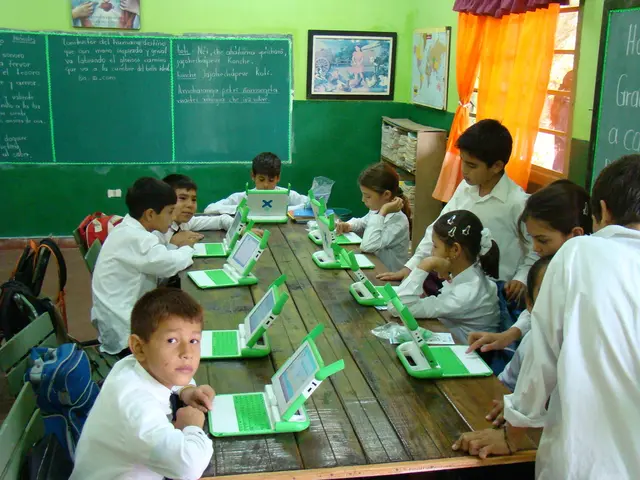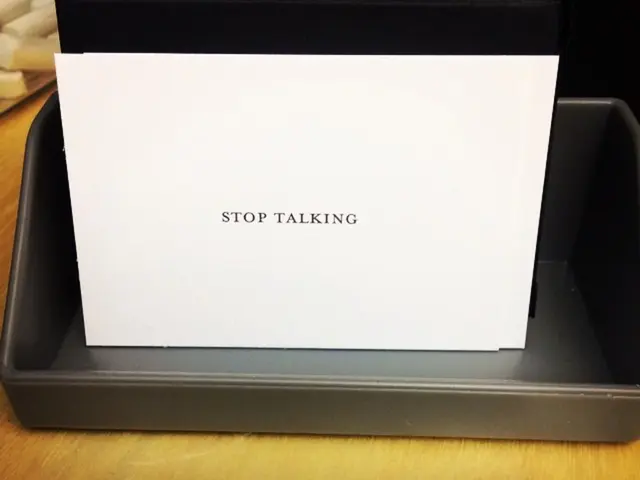AI Developer OpenAI Ignoring Practicalities in AI-Human Interactions
AI Heartstrings: Navigating Emotional Entanglements with Chatbots
The fascinating world of AI is evolving swiftly, and one area that's generating a buzz is the human-AI relationship. Joanne Jang, OpenAI's Head of Model and Behavior Policy, recently penned a blog post, offering insights into how OpenAI tackles the intricate issues surrounding this relationship.
However, Jang's post misses a critical point. Amidst the AI chatter, people are establishing emotional bonds - some deep and enduring. It's not just a theory; it's happening - and happening extensively.
OpenAI might be taken aback by the intensity with which users anthropomorphize AI, as CEO Sam Altman himself admitted to being surprised by this phenomenon. But it shouldn't be. After all, users claim to form strong emotional ties with these AI models.
OpenAI is making strides to understand the emotional aspect of AI-human interaction. They're investigating why users develop emotional attachments and how this knowledge can shape future models. However, the approach lacks an immediate solution, focusing more on long-term cultural conditioning.
This detached, academic approach is reminiscent of a flood-hit area slapping up a "Wet Floor" sign after the disaster. While the company is researching waterproof buildings, the floor is already knee-deep in water.
The reality of AI intimacy is unavoidable, with users sharing their feelings with their favorite chatterboxes - sometimes humorously, sometimes heartbreakingly, and sometimes disturbingly. Reports of AI replenishing human connections or even romantic relationships aren't uncommon.
AI Affinity
Among the plethora of stories are Reddit threads, heartfelt Medium essays, and viral videos of people indulging in tender conversations with their favorite chatbot. These emotional connections can be alarming, leading to real-world consequences such as lawsuits over AI-induced suicides.
OpenAI acknowledges the comforting feeling of constant, non-judgmental engagement with an AI model. They admit that fine-tuning a chatbot's tone and personality can intensify the emotional appeal. Yet, the tone of the post feels excessively clinical, evading the potential scope of the problem.
Since the cat's out of the bag regarding AI intimacy, it's about instant action, not future deliberation. Ideally, AI systems should be equipped with dependency detection mechanisms. If a user engages excessively with an AI model, implying an emotional dependence, the system should suggest a break.
Romantic connections need boundaries, not prohibitions. While it's unreasonable to ban AI-human romantic interactions, strict regulations requiring AI to remind users they're interacting with a machine should be implemented. After all, humans have an uncanny knack for projecting feelings onto non-human entities.
The same goes for AI models in general. Regular reminders that AI is not human might feel awkward, but they might be necessary - a precautionary measure to protect users from developing illusory emotional bonds.
It's not the users' fault they anthropomorphize AI - rechristening Roombas with names and projecting personalities onto vehicles is merely seen as slightly quirky. AI models like ChatGPT, owing to their responsiveness and verbal nature, can easily overshadow human companionship. But companies like OpenAI have a responsibility to anticipate these emotional connections and design AI with this reality in mind.
One might argue that incorporating safety checks would dampen the fun. But playgrounds have fences, and roller coasters have seat belts for a reason - to ensure safety while still allowing enjoyment. AI capable of mimicking and provoking emotions without proper safety checks is akin to a playground without fences.
I'm delighted that OpenAI is considering this issue; I just wish they'd shown more urgency in addressing it. AI product design needs to reflect the reality that people are already in relationships with AI, and these relationships demand more than thoughtful essays to thrive.
Additionally, You might also delve into:
- The Fascinating Frontier: Exploring Anthropic's new AI-penned blog
- AI's Symphony of Sounds: A Technical Marvel or a Musical Misnomer?
- The Voice of AI: Journey of Audible's AI Narration
- The emotional connections formed with chatbots are not limited to online platforms, as seen with the increasing popularity of AI-generated art and music, transforming the traditional concept of art and lifestyle.
- As the boundary between AI and human relationships becomes increasingly blurred, partnerships between AI companies and camera manufacturers could lead to the development of personalized virtual photographer assistants, potentially impacting professional photography and the industry as a whole.
- Incorporating artificial intelligence into lifestyle choices, such as personal shopping or fitness management, could enhance the user experience by understanding and catering to individual emotions, further demonstrating the growing influence of AI on relationships and daily life.








